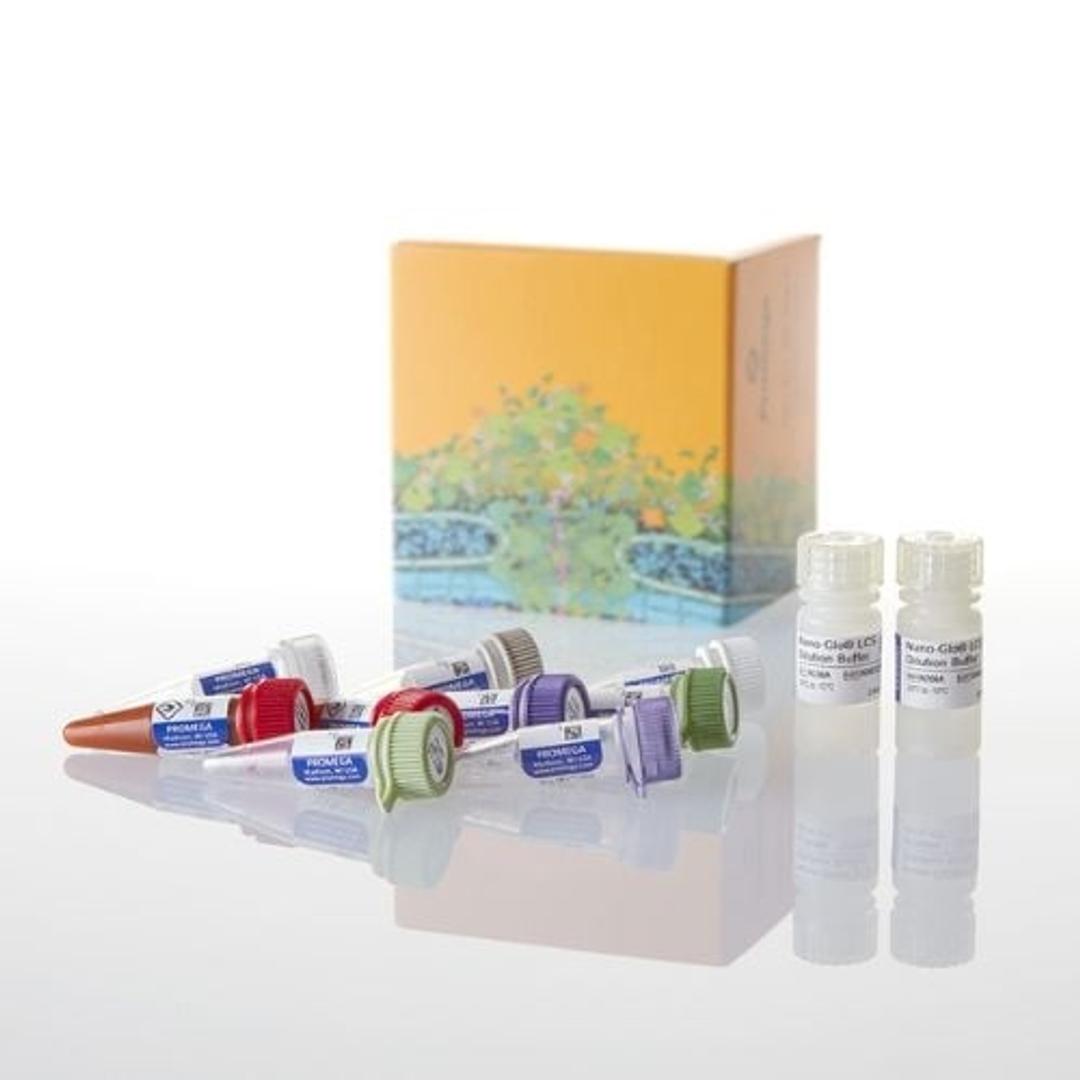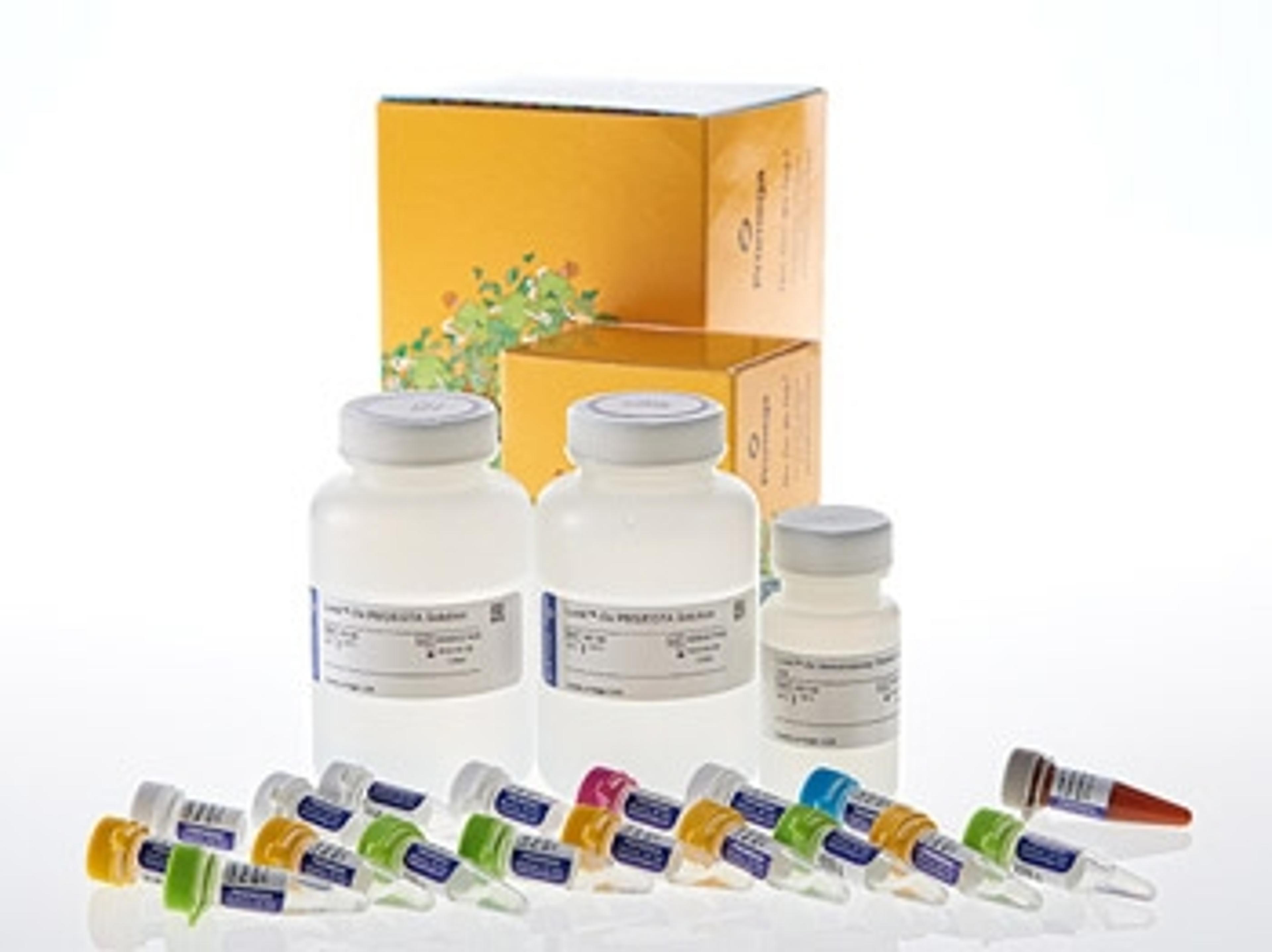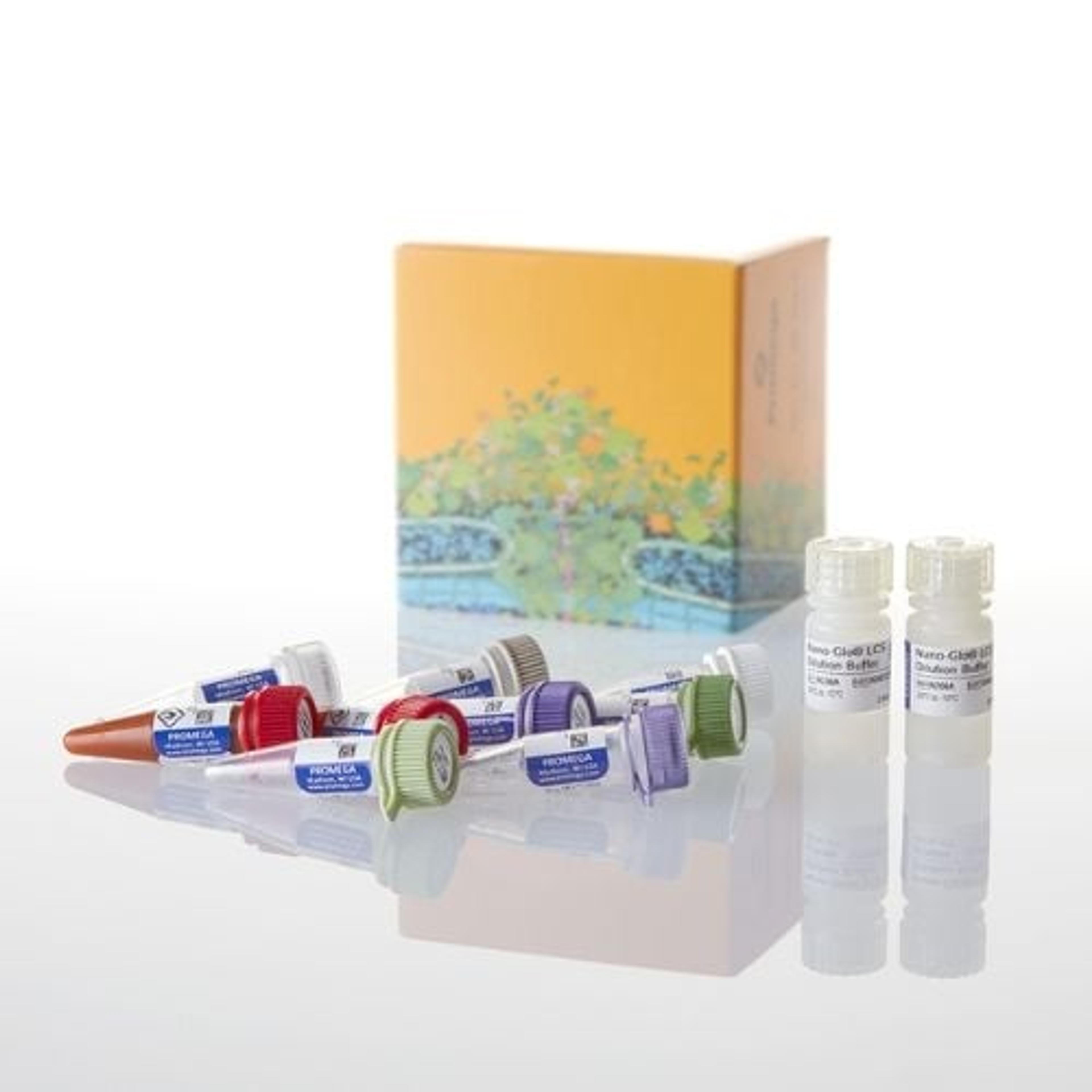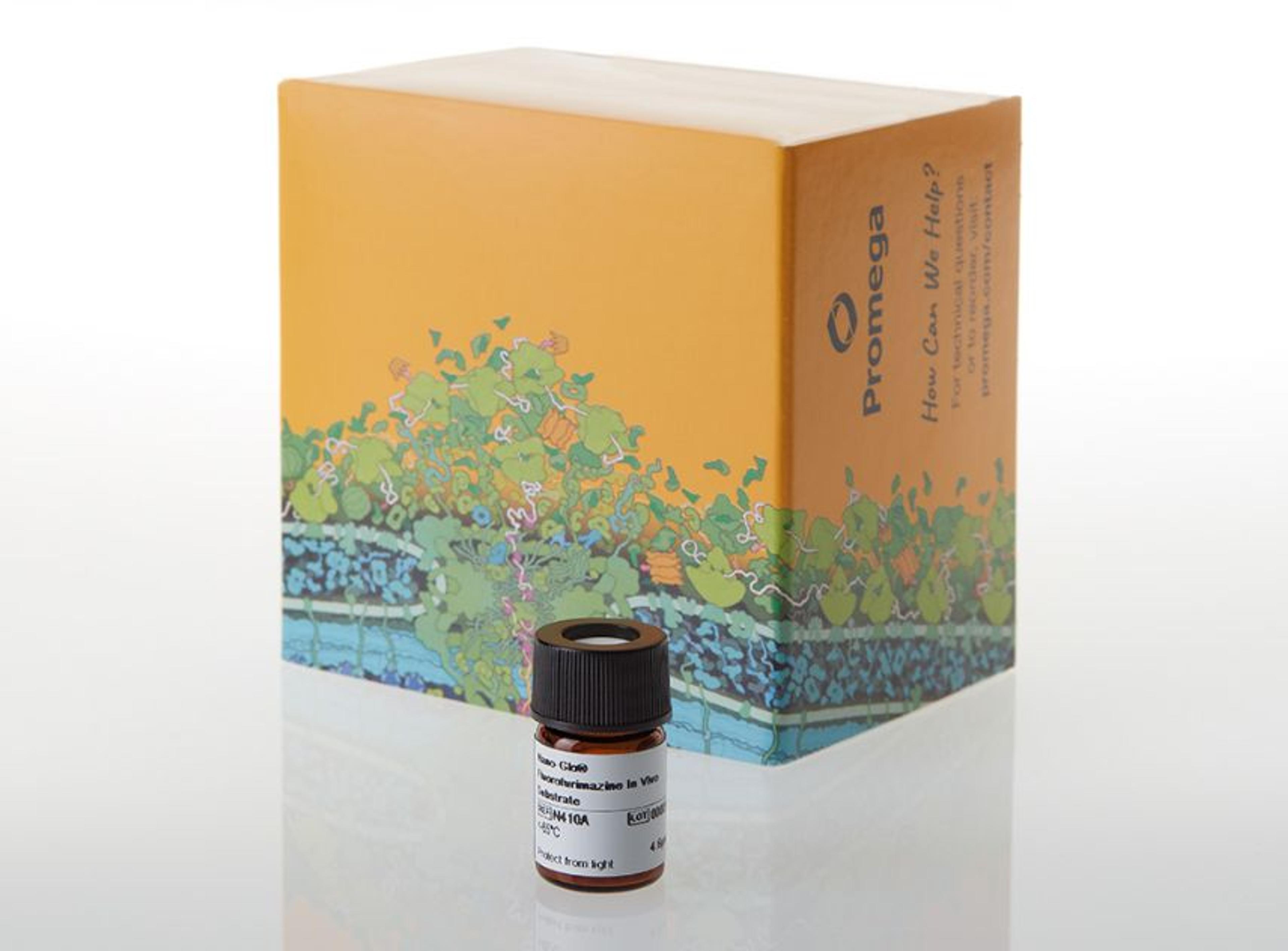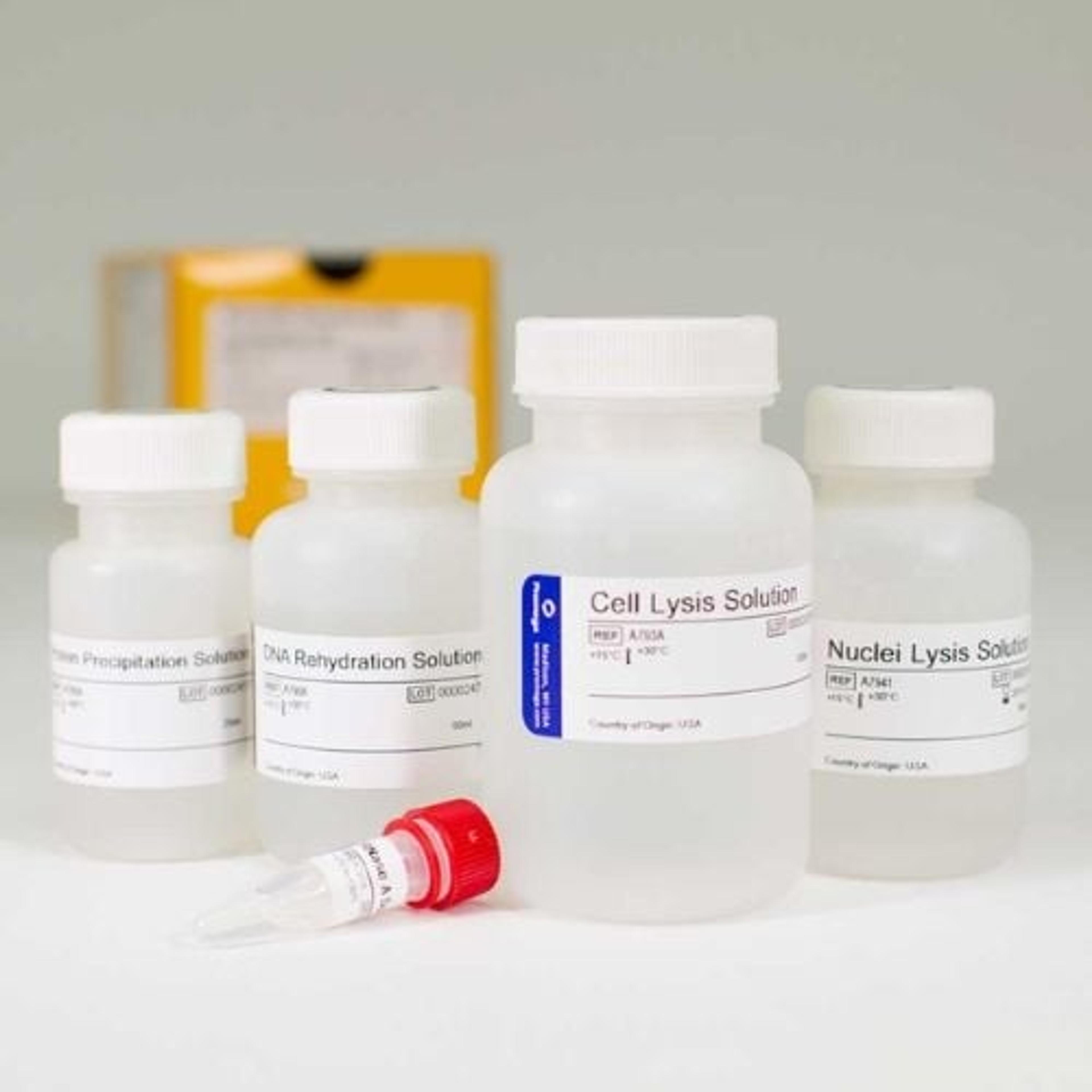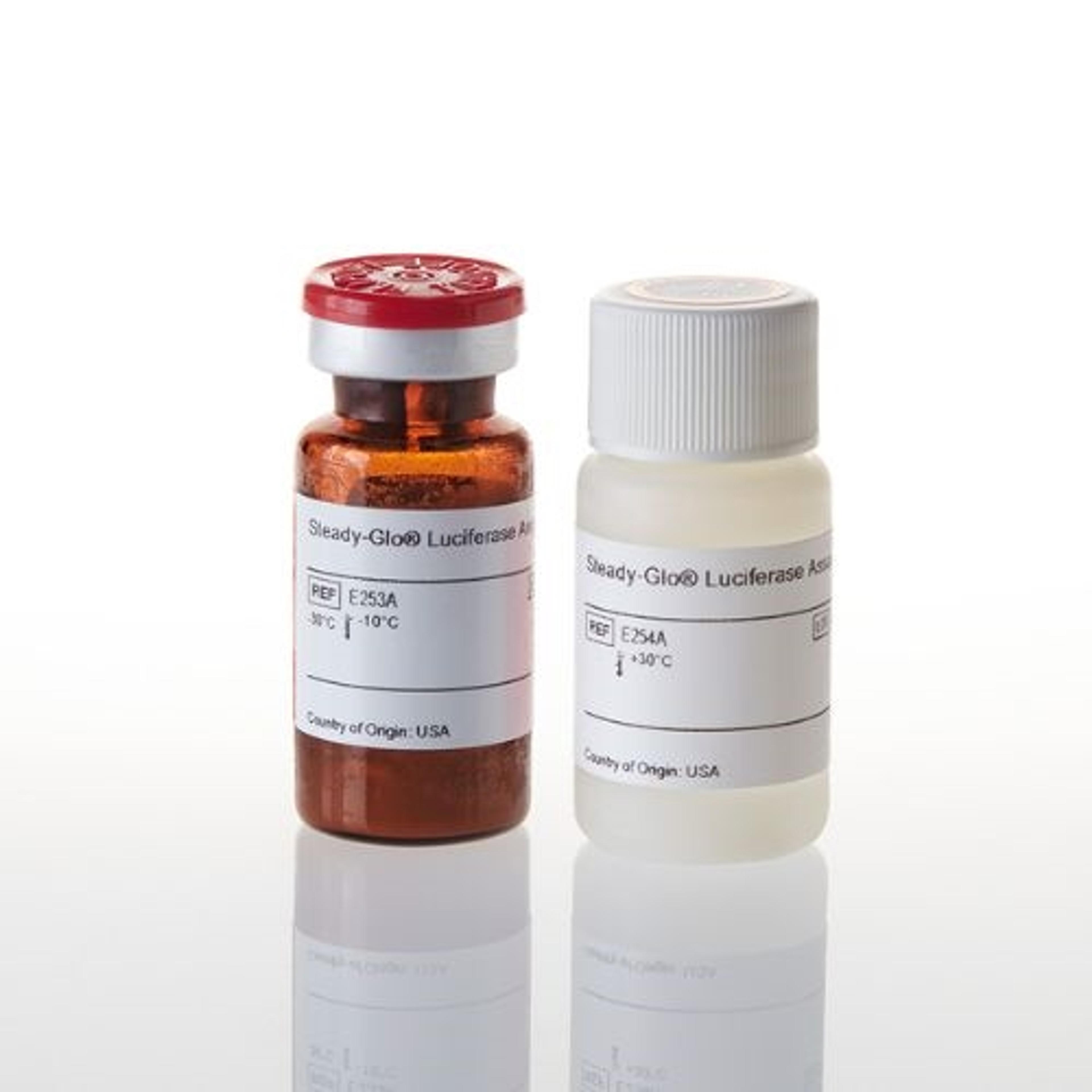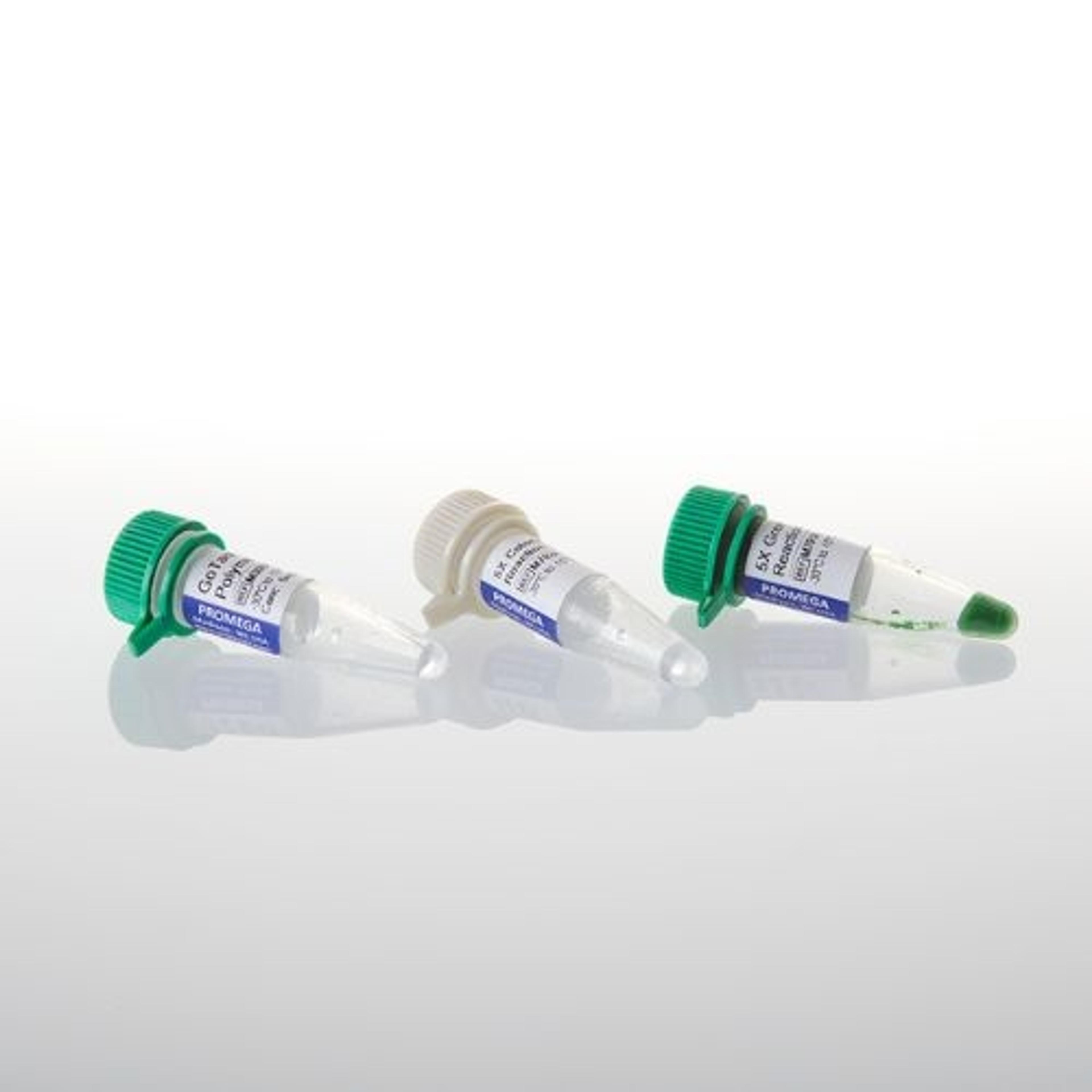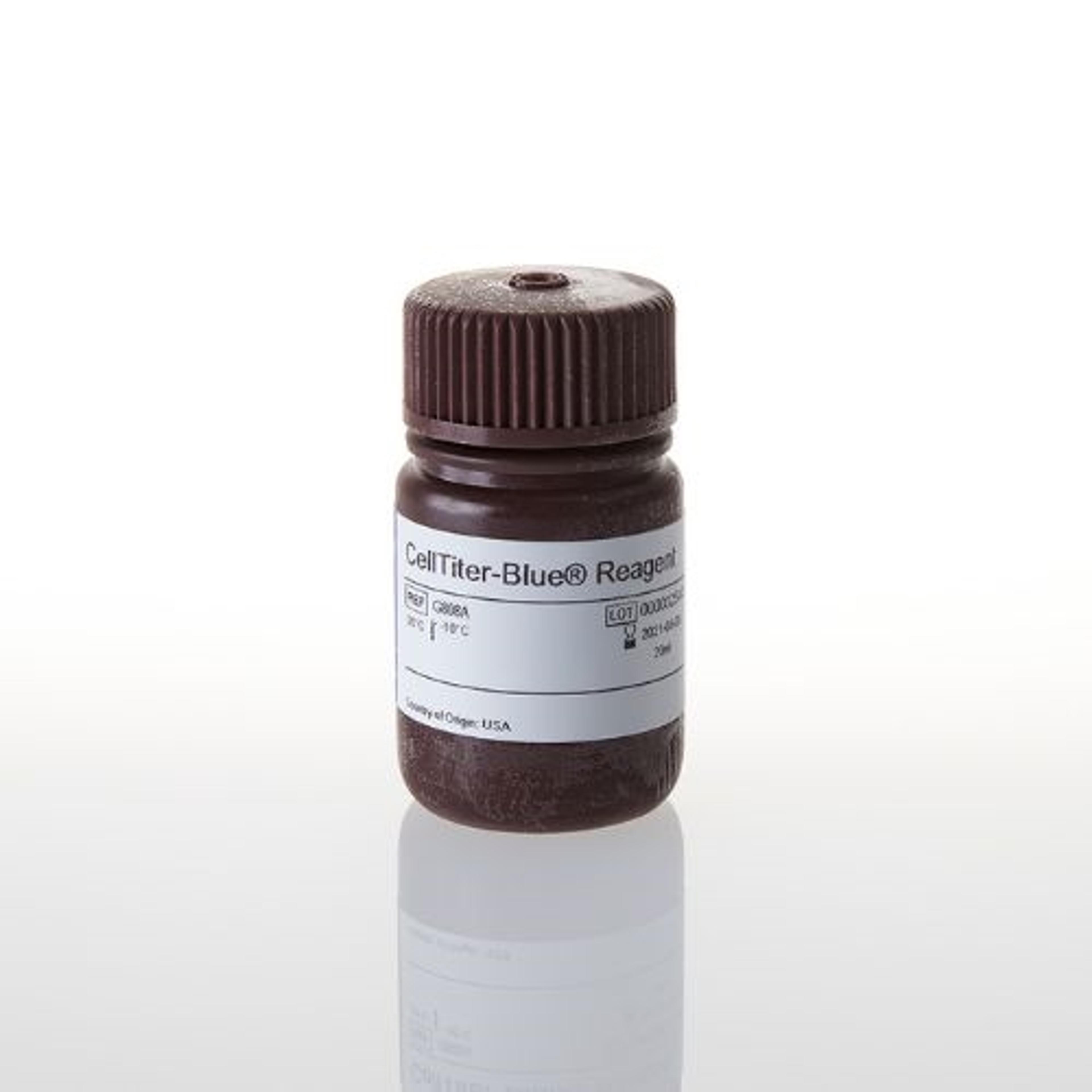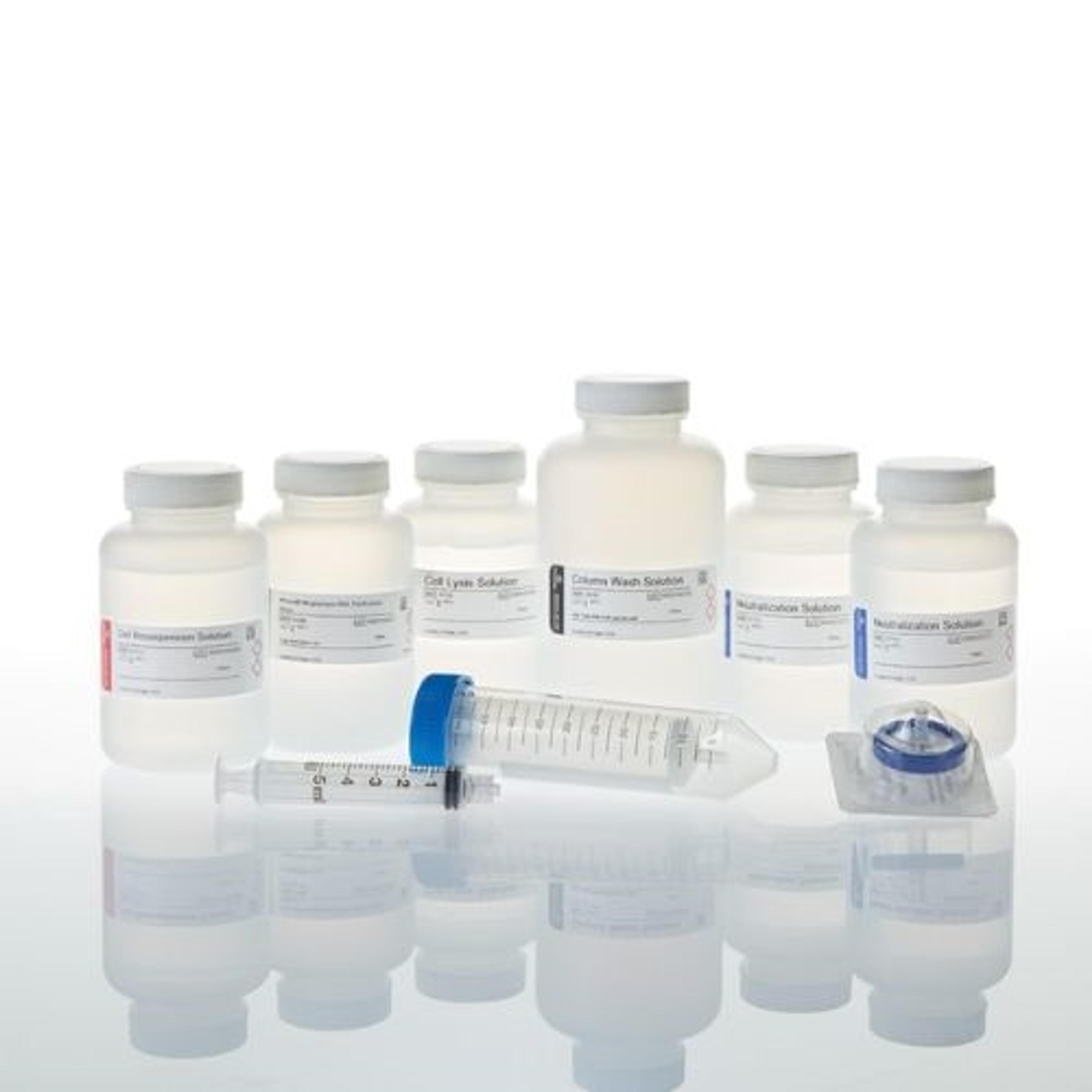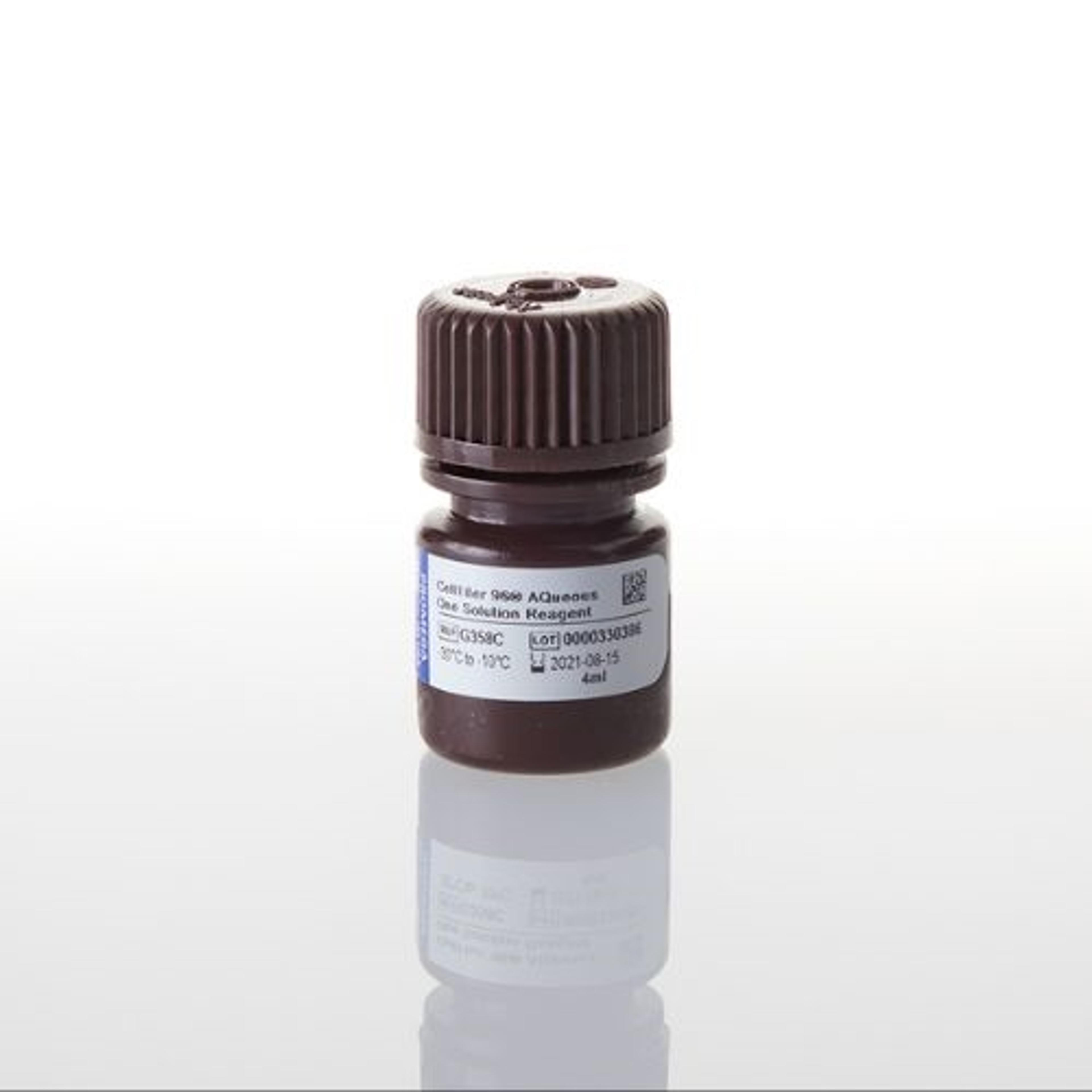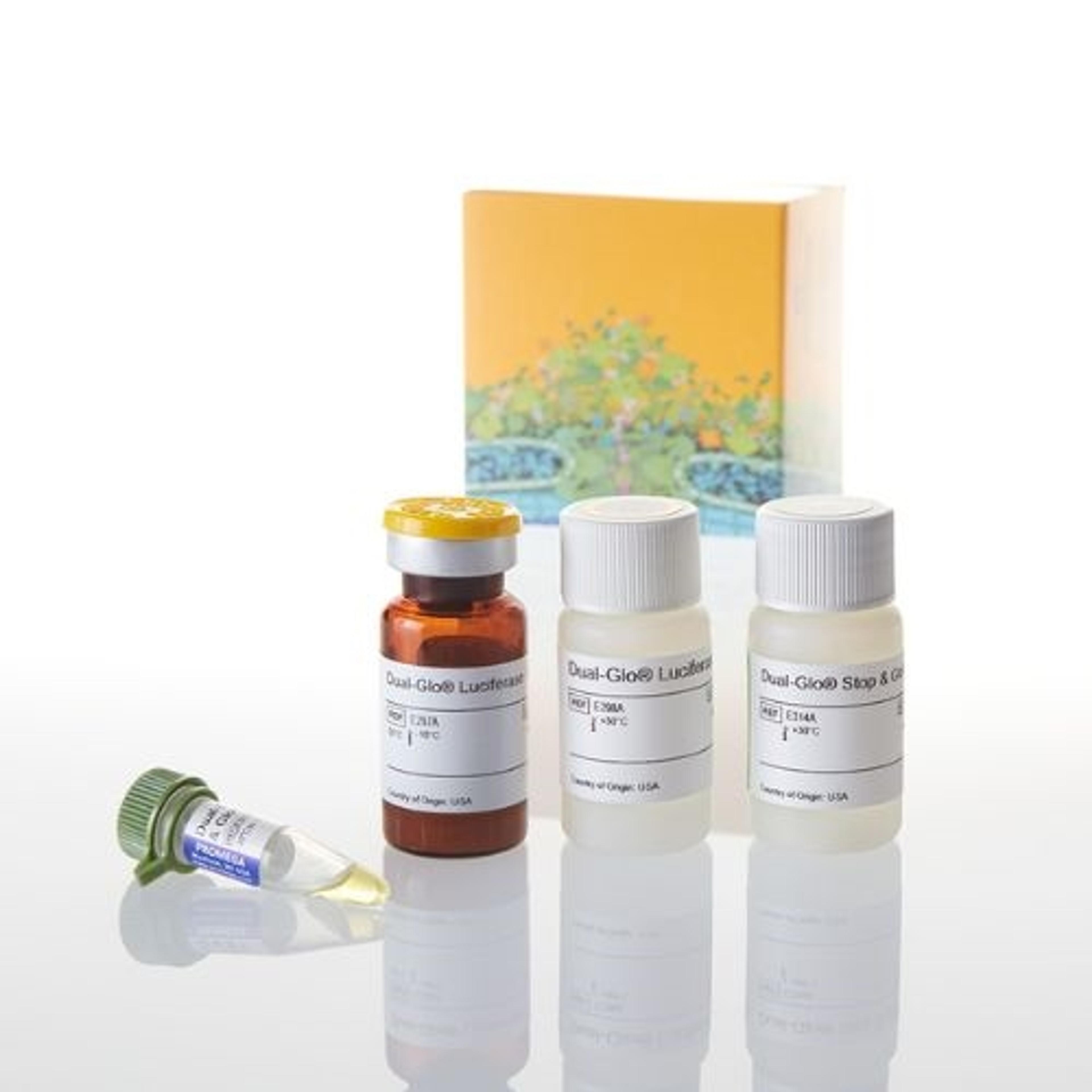NanoBiT® PPI Starter Systems
NanoLuc® Binary Technology (NanoBiT) is a two-subunit system based on NanoLuc® luciferase that can be applied to the intracellular detection of protein:protein interactions (PPIs) in live cells. The NanoBiT® system is composed of two small subunits, Large BiT (LgBiT; 18kDa) and Small BiT (SmBiT; 11 amino acid peptide), that are expressed as fusions to target proteins of interest. The LgBiT and SmBiT subunits have been independ…
Great results. I've used this for so many different projects.
Protein interaction
Excellent versatility and ease of use. Easy to make a toolbox of ppi sensors.
Review Date: 15 Jul 2020 | Promega Corp.
Very sensitive detection method in live cells.
Analyze protein-protein interaction
This kit is to detect protein-protein interaction using luciferase activity. It is easy to make DNA constructs for fusion proteins. After a simple transfection of 2 DNA plasmids into mammalian cells, one can detect the interaction between 2 fusion proteins by monitoring luciferase activity. It is very sensitive and easy to use. When protein association is induced by some treatments, one can monitor this association in a real time. When I had difficulty in setting up the system, Promega’s customer service helped me a lot.
Review Date: 25 Oct 2019 | Promega Corp.
NanoBiT is an excellent system for studing PPI in real-time in live cells
Monitor cell signalling protein-protein interaction in live cells in real-time
NanoBiT system allows flexible development of a very effective and easy to use real-time protein:protein interaction assay. The starter kit contains MCS vectors for flexible cloning of any gene of interest with either N- or C-terminally positioned tags - fragments of NanoLuc. Upon interaction of two proteins of interest, fragments of split NanoLuciferase complement forming a fully active enzyme. NanoLuc activity is quantified with a specific substrate, furimazine. Luminescence detected with NanoLuc (used in NanoBiT) system is much stronger than of any other "classical" luciferase. This allows for the detection of protein:protein interaction which may often be rather transient and subtle cellular events. Also, it enables the expression of the interacting proteins at relatively low levels, as overexpression may lead to "forced" interaction and in result generate false positives. We developed multiple assays based on NanoBiT system for studding GPCR biology, including beta-arrestin recrutment and G-protein interaction assays among others.
Review Date: 11 Jul 2019 | Promega Corp.
Great product; I would like to get more information on the use of this system for compound screening
Protein-protein interaction in cells
Quality is high with reproducible results. Only issue I have is specificity with small molecules.
Review Date: 29 Jun 2016 | Promega Corp.
Highest quality products that give excellence in our laboratory
analyze all clinical samples with accuracy and precision.
High throughput in efficiency and effectiveness for patientcare
Review Date: 3 Jun 2016 | Promega Corp.
Ease of use; low amounts of plasmids for transfection.
Protein-protein interaction
Dynamic range is about 3 order of magnitude compared to the background signal. It is easy to use and uses nanogram amounts of plasmids for transfection. The protein-protein interaction can be evaluated in 1:1 stoichiometry. I would certainly recommend this product to my colleagues. There is a good product and technical support from Promega.
Review Date: 24 May 2016 | Promega Corp.
Excellent product.
Protein-protein interaction, such as fret assay.
Very efficient, easy to use, easy to analyze data. I will definitely recommend it to my colleagues.
Review Date: 20 May 2016 | Promega Corp.
Very easy to clone multiple tag locations.
Protein Protein interaction HTS
Very easy to clone multiple tag locations. Easy to use reagents with high signal to background. Excellent support. The flexi system makes cloning of all the combinations for testing very easy. Also, they have both strong and weak promoter systems to minimize and tune the expression level.
Review Date: 20 May 2016 | Promega Corp.
Greatly improves luciferase complementation assays.
Protein-protein interaction upon cell stimulation.
The small size of the bits increases stability of your fusion proteins. It is better than the original firefly luciferase complementation assay.
Review Date: 20 May 2016 | Promega Corp.
Excellent product and great results.
Detecting protein-protein interactions between two trans-membrane proteins.
It's a very easy to use technique. Protocol is very clear and fast. Controls work great and the quality of the results obtained are fantastic. I highly recommend this product for the study of protein - protein interactions.
Review Date: 20 May 2016 | Promega Corp.
NanoLuc® Binary Technology (NanoBiT) is a two-subunit system based on NanoLuc® luciferase that can be applied to the intracellular detection of protein:protein interactions (PPIs) in live cells. The NanoBiT® system is composed of two small subunits, Large BiT (LgBiT; 18kDa) and Small BiT (SmBiT; 11 amino acid peptide), that are expressed as fusions to target proteins of interest. The LgBiT and SmBiT subunits have been independently optimized for stability and minimal self-association. Interaction of the target proteins facilitates subunit complementation to give a bright, luminescent enzyme.
The NanoBiT® PPI Starter Systems provide the vectors required to create the LgBiT and SmBiT protein fusions, a PRKACA:PRKAR2A constitutively interacting positive control pair and a negative control vector. Starter systems also include the Nano-Glo® Live Cell Assay System, a single-addition, non-lytic detection reagent used for monitoring NanoBiT® luminescence in living cells. The reagent is prepared by diluting the Nano-Glo® Live Cell Substrate with the Nano-Glo® LCS Dilution Buffer to make the Nano-Glo® Live Cell Reagent. Both substrate and buffer solutions are optimized to provide enhanced stability and reduce autoluminescence in the presence or absence of serum, increasing the sensitivity for detection of low levels of NanoBiT® luminescence. The FKBP:FRB pair is provided separately as an inducible positive control.
Expression is driven by HSV-TK promoter, providing constitutive, low-level expression in mammalian cells. Using the NanoBiT® MCS Starter System, you can generate N- and C-terminal LgBiT and SmBiT fusions to proteins of interest using traditional cloning with a multiple cloning site (MCS). Using the NanoBiT® Flexi® Starter System, you can generate N- and C-terminal LgBiT and SmBiT fusions using the Flexi® Vector Cloning System, a directional cloning method based on two rare-cutting restriction enzymes, SgfI and PmeI, that provides a rapid, efficient and high-fidelity way to transfer protein-coding regions between Flexi® Vectors without the need to resequence. Utilize Find My Gene™ to obtain your ORF clones already in Flexi® format for simple creation of fusions.
Features:
- Obtain Greater Sensitivity: Bright signal and reduced background improve sensitivity, signal:background ratio and dynamic range.
- More Accurately Model PPI Biology: Minimize artifacts with small tags and low, natural expression levels; perform real-time kinetic analysis in live cells.
- Precisely Measure Interaction Dynamics: Low affinity of tags minimizes spontaneous LgBiT:SmBiT association; complementation is easily reversible allowing accurate analysis of protein association and disassociation.
- Perform Simple Measurement: Bright luminescent output is ideal for any luminometer with no specific filter or injector requirements.
- Scale Your Assays: Assays can be scaled from bench to HTS, allowing use with any plate size up to 1,536-well format; detection reagent has been optimized for benchtop stability.
Applications:
- Real-time measurements of PPI dynamics.
- Single-copy or single-cell measurements of PPI.
- PPI modulator screens in 384- or 1536-well formats.

